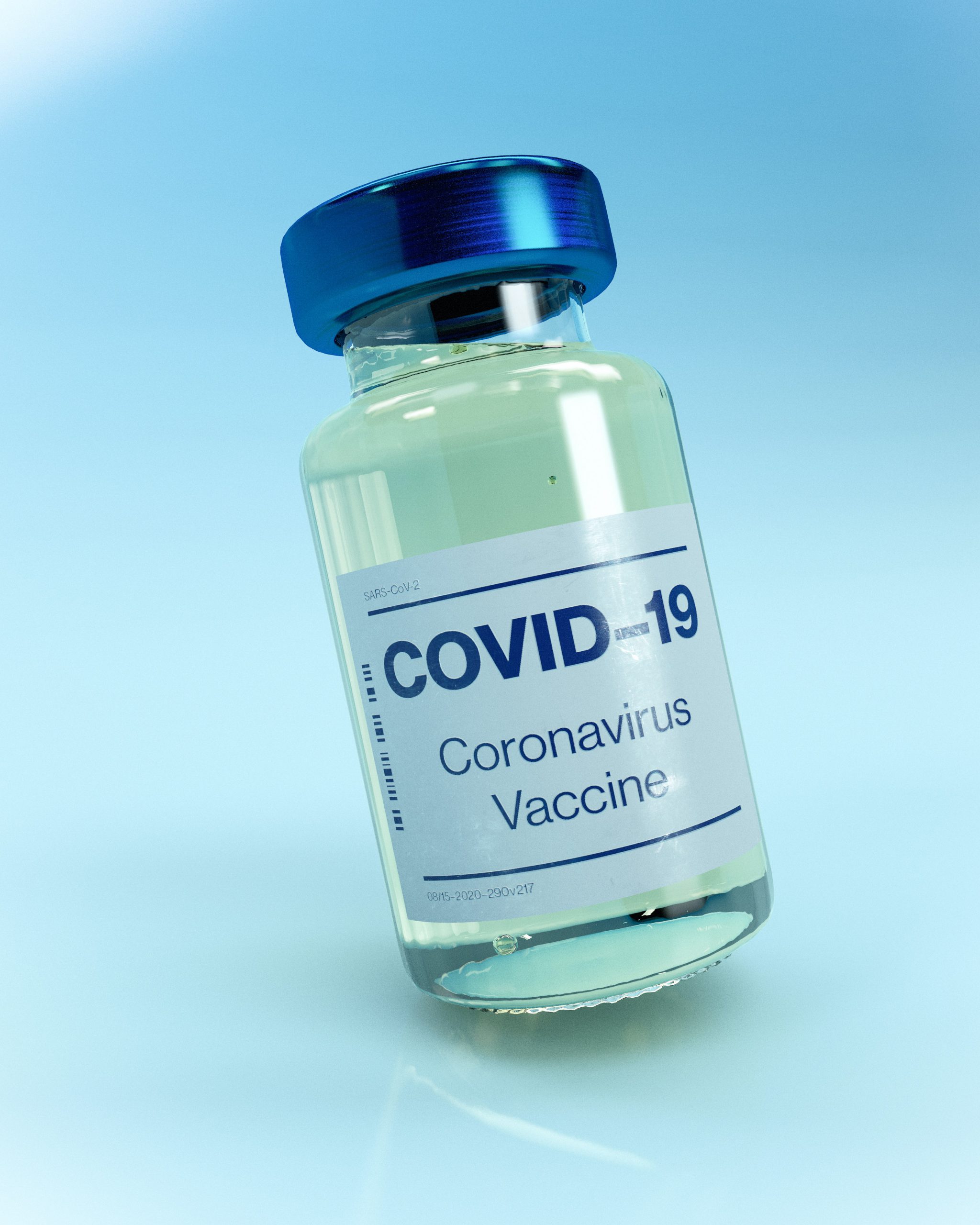Last Updated on March 5, 2021
The COVID-19 pandemic is a reminder of the important role immunization plays in preventing infections. Vaccinations contribute to stopping epidemics/pandemics and greatly benefit public health. Like polio and influenza before it, vaccinations against the novel coronavirus will be a major part of trying to stop the global pandemic. Vaccines are vital to herd immunity and preventing infection without causing the disease.
The Immune System
To understand how vaccinations work, it is necessary to know something about the human immune system which is responsible for fighting off and protecting against infection. The primary component is white blood cells. To fight infection, white blood cells react to proteins on the virus or bacteria surface called antigens. White blood cells can fight infections directly or produce a variety of defenses. There are many types of white blood cells, each playing a different role in the body’s fight against bacteria and viruses.
Neutrophils and Macrophages
White blood cells called neutrophils and macrophages directly attack infectious organisms, usually bacteria. They recognize foreign antigens on the organism, attach and take the organism inside itself (phagocytosis), and destroy it with various proteins. The while blood cells are usually destroyed in the process. These infected cells can also be recognized and destroyed by cytotoxic T cells described below. Because the cells are destroyed, no memory of the infection remains. Most bacterial infections do not result in long-term protection from the bacteria.
Lymphocytes
White blood cells called lymphocytes predominantly fight viral organisms. There are two basic types of lymphocytes that work differently to do this.
B cells work by producing and releasing proteins into the bloodstream and lymphatic system. Antibodies and immunoglobulins attach to the organism’s specific antigens and start a series of reactions that destroy the organism. In most cases, the body keeps these antibodies in the bloodstream for a time after an infection to prevent reinfection from that specific virus. The series of steps involves increased production of complement and other proteins. These proteins are mostly expended in the process.
T cells are programmed to recognize any cell with foreign antigens, such as infected macrophages (bacterial or viral) or cancer cells. There are a number of different types of T cells. A lymphocyte reaction starts with and is coordinated by the Helper T cell. These cells attach to and release cytokines that communicate with B cells to help them produce antibodies and with Killer T cells to activate them. Once activated, the Killer (cytotoxic) T cells attach to and destroy cells with foreign antigens or infectious organisms by releasing destructive proteins into the cell. They interact with Suppressor (regulatory) T cells to produce proteins that help shut down the immune response, preventing complications that could happen otherwise.
An important part of the leukocytic immune system is remembering each foreign antigen or infection it has been exposed to and the ability to act quickly after the exposure. For most viruses, this will happen quickly after subsequent exposures to that specific virus and prevent the illness. Unfortunately with some viral illnesses, such as a common cold and the flu (influenza), there are hundreds of specific viruses. Each has their own unique antigens, and specific antibodies need to be developed for each one.
Herd Immunity
To stop or prevent an epidemic or pandemic there need to be enough people no longer susceptible to the disease to prevent it from spreading, whether through vaccination or recovery from the disease. This is called herd immunity and it can apply anywhere from the global population to smaller groups such as communities, colleges, and military facilities.
The percentage of protected individuals needed to attain herd immunity varies by infection. The more contagious the disease, the higher rate of protection needed to contain it. This may be as high as 70% to 85% for COVID-19, depending on the prevalence of new strains in the population and other protective measures used such as social distancing and wearing masks.
Since most vaccines are only 85%-95% effective, the vaccination rate will usually need to be higher than the herd immunity rate. This is especially true when an infection does not result in long-term immunity, such as most bacterial infections. Doctors are only starting to learn if coronavirus infection results in long-term immunity and are currently recommending that even those who have had COVID get the vaccine.
For more details see: Vaccines for Pandemic Threats from the History of Vaccines website.
Vaccinations
Vaccinations take advantage of the immune system’s ability to remember and identify specific antigens and respond quickly to them. There are four ways that vaccines can do this. The specific details vary among vaccine types, infectious agents — even for the same disease. For example, each of the current COVID-19 vaccinations work in a slightly different way.
Whole Virus Vaccines
The first two vaccine types are effective for viruses. They cause the body to react to the specific antigens on the outside of the virus when exposed to it in the future.
Attenuated Virus
Some vaccines contain live attenuated (weakened) viruses. These vaccines produce a response that is the same as the innate lymphocytic process. Since replication of the virus after injection increases its effectiveness, these vaccines only require a limited number of booster shots. They can’t be given to those with a weakened immune system. Common live vaccines include measles, mumps, rubella (MMR combined vaccine), chickenpox, rotavirus, smallpox, and yellow fever. The Johnson & Johnson COVID-19 vaccine is also a live virus vaccine.
Killed Virus
These vaccines consist of killed or inactivated viruses. The dead organisms still contain the antigens they had when active and the immune response is similar to the innate process. Inactivated vaccines usually require more booster shots than live vaccines. Common inactivated vaccines include hepatitis A, flu shot, polio (IPV), and rabies.
Component Vaccines
The component vaccines can protect against both bacterial and viral organisms by causing the body to react to a certain part or component of the organism or something the organism produces, such as a toxin. The immunity from a component vaccination can be better than if you had recovered from the infection since they produce long-term protection from infections with organisms that the body does not naturally develop after an infection. They can be used by most people who need them, including those with weakened immune systems and long-term health risks.
There are two ways for component vaccines to trick the body into making the appropriate immune response to the component and provide long-term protection against an organism when a natural infection does not. Both involve adding something that improves the immune response to the vaccine.
The most commonly used is an adjuvant, a chemical or molecule that stimulates the immune system and causes a reaction to the component. Conjugate vaccines, including Hib (Haemophilus influenzae type B), meningococcal, and pneumococcal, attach the bacteria’s outer coating to a recognizable antigen (such as tetanus toxoid with the Hib vaccine). When the immune system responds to the antigen, it also learns to respond to the outer coating. Finding the most effective adjuvant and antigen/component for each vaccine can be a long and complicated process.
Another way to improve the immune response to a vaccine is to give it in combination with other vaccines, as is frequently done with children.
Toxoid Vaccine
Toxoid vaccines are used for bacteria, such as diphtheria and tetanus, that produce a toxin or other chemical that causes the major symptoms (such as prolonged muscle contraction with tetanus).
Fragment Vaccine
Fragment vaccines can be created for bacteria or viruses by producing a reaction to a fragment or part of the organism. Common vaccines include Hib (Haemophilus influenzae type b) disease, hepatitis B, HPV (human papillomavirus), whooping cough (pertussis), pneumococcal disease, meningococcal disease, and shingles. There are different types depending on what fragment of the organism is used as the antigen and how it causes the antigen to be recognized.
Fragments that can be used are a subunit, a specific protein or sugar isolated from the organism, the viral capsid (a casing around a virus) or bacterial coating, or the messenger RNA produced by the virus that codes for a capsid protein (Pfizer and Moderna COVID-19 vaccines).
Limitations
While vaccinations are a crucial part of preventing infections, it is important to be aware of some limitations. These limitations have led to the Center for Disease Control and Prevention (CDC) recommending that even people who have had two doses of COVID-19 vaccine continue to social distance and wear masks in public.
No vaccine is 100% effective and many people cannot or choose not to be vaccinated, so there will always be those who are susceptible to the infection. If the number of unvaccinated people prevents the population from reaching the herd immunity threshold, it becomes exceedingly difficult to control a pandemic.
After immunity from a vaccination has developed, the body will react like it would have if that immunity developed from a previous infection. Once the infection enters your body, the immune response prevents you from developing symptoms. However, this may not prevent the organism from making enough copies to continue spreading the infection to susceptible contacts.
Immunity from vaccinations may diminish or even disappear over time. This requires vigilance to keep your immunity up-to-date with booster shots, such as with tetanus shots every 10 years. It is too soon to know the details about the COVID-19 vaccines.
Many infections, especially viruses like influenza and COVID-19, can quickly mutate into variants. In many cases, a new vaccine needs to be developed for each variant.
General References
- Cairns R. How do vaccines work? The scientific process behind how vaccines are made. Microsoft News website. Published: July 4, 2020. Accessed: February 15, 2021.
- How are vaccines developed? World Health Organization website. Updated: December 8, 2020. Accessed: February 16, 2021.
- How Do Vaccines Work? HealthyChildren.org website. Updated: February 26, 2019. Accessed: February 15, 2021.
- How do vaccines work? World Health Organization website. Updated: December 8, 2020. Accessed: February 16, 2021.
- How vaccines work. British Society for Immunology website. Accessed: February 16, 2021.
- How Vaccines Work. PublicHealth.org website. Accessed: February 16, 2021.
- Understanding How Vaccines Work. CDC website. Updated: July 2018. Accessed: February 16, 2021.
- Vaccines Protect You. U.S. Department of Health and Human Services website. Updated: March 2020. Accessed: February 16, 2021.
- Vaccine Types. U.S. Department of Health & Human Services website. Updated: March 2020. Accessed: February 15, 2021.
- Wenner-Moyer M. Okay, I’m Vaccinated. Can I Do All the Things? elemental+ website. Posted: February 22, 2021. Accessed: March 1, 2021.




